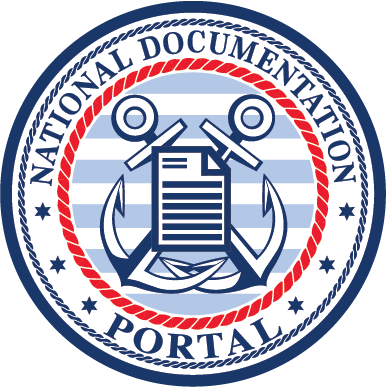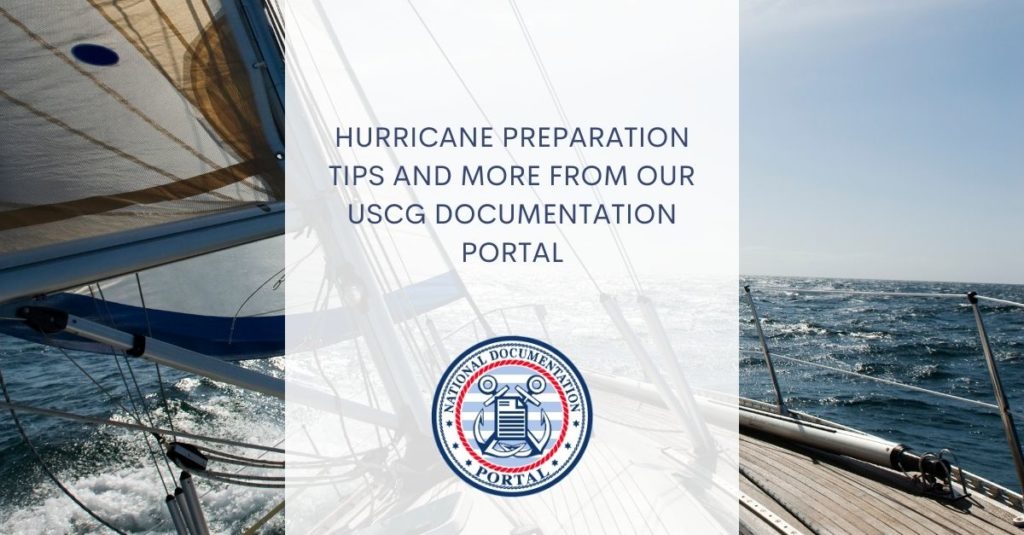With hurricane season nearer than you think, are you prepared? Do you know what to do should a hurricane come to your port? Yes, there’s only so much you can do in the event of a hurricane. However, you want to be as prepared as possible. Our USCG documentation Portal was always designed to be a hub of vessel information. Below are just some of the steps you can take to be prepared for this or any other hurricane season.
Navigating the tumultuous waters of a hurricane isn’t just about securing your vessel physically—it’s also about safeguarding you and yours, too. While your primary concern during a natural disaster should always be the safety of yourself and loved ones, ensuring that your vessel is ok can help with post-storm stress. Our Documentation Portal is always available online so that you can take care of the forms that matter for your vessel.
Preserving Your Vessel Documentation
First and foremost, to prioritize the protection of your vessel’s paperwork, store your documentation in a secure location that you trust implicitly.
As you’re most likely aware, possessing a tangible Certificate of Documentation is imperative for compliance with regulatory authorities. Failure to produce it upon request by authorities could hinder your vessel’s usage as desired.
Consider obtaining a Certified Copy from our platform for added peace of mind. Alongside our documentation services, safeguard other pertinent records such as insurance policies, storage facility leases, marina agreements, inventory lists, and any other documents you can’t afford to lose.
Preparation Before the Storm
Now that your paperwork is secure, take additional measures to shield your vessel before the hurricane makes landfall.
Keep your inventory lists updated for insurance purposes and consider photographing your vessel to substantiate any claims post-storm. Reach out to marina authorities well in advance of the impending weather event—they may offer emergency mooring options to safeguard your vessel. Alternatively, if feasible, transport your vessel inland or reinforce it within the marina.
Secure fuel lines, doors, hatches, cabinets, lockers, and windows to minimize potential damage. Additionally, weigh down your vessel and remove drain plugs to mitigate flooding risks.
When the Storm Strikes
In the face of impending danger, in terms of last ditch efforts you can take, seal and secure all openings on your vessel to prevent potential breakage. Ideally, relocate your vessel to a safe haven inaccessible to the hurricane’s wrath.
Whether that entails trailering it to a secure location or doubling up on mooring lines within the marina, prioritize its protection. Utilize longer lines and additional fenders to enhance stability and minimize the risk of damage.
Safety Tips Year Round Regardless of Weather
Not all vessels will be in the path of hurricanes during this or any other season. That said, there are safety rules that all vessels do have to follow.
For example, the Coast Guard bases many safety guidelines on boat length. For vessels under sixteen feet (like canoes or kayaks), they require each person onboard to have a wearable and easily reachable personal flotation device. Larger vessels must have that as well as an immediately accessible throwable device.
Staying Safe in Regards to Fire
Regardless of size, boats with enclosed fuel or engine spaces, enclosed living areas, or permanent fuel tanks should have fire extinguishers. A general rule: if there’s a spot where a fire could potentially ignite, keep a fire extinguisher handy. While a single-person kayak might not need one, larger vessels with machinery spaces definitely do. As with so much else, use your common sense.
Lights and Sound
The key: ensure visibility in emergencies. Operating a vessel between sunset and sunrise requires night signals, regardless of vessel size. For vessels over sixteen feet, the requirement extends to pyrotechnic devices usable for three days and/or nights. However, alternatives like an orange flag (for daytime) and an electric S-O-S signal light (for nighttime) also comply. Navigation Lights
Proper navigation lights are crucial for nighttime safety at sea. Meeting these standards for displaying navigation lights is vital to prevent collisions and enhance visibility, thereby contributing to overall safety.
Additionally, sound signals play a crucial role in vessel communication, especially in low-visibility situations. The regulations specify the type of sound-producing devices, such as horns or whistles, necessary onboard to facilitate effective communication.
Operational Limits on the Water
Compliance with regulations also entails understanding and adhering to operational limits tailored to each vessel. This includes capacity restrictions, guidelines for load distribution, and other factors crucial for maintaining stability and safety during operation.
Our USCG Documentation Portal is Open
To explore how our platform, the USCG Documentation Portal, can support vessel owners in returning to smooth sailing year-round, please visit our site. Discover how we are dedicated to aiding maritime endeavors and assisting in the restoration process after any storm-related damage.

